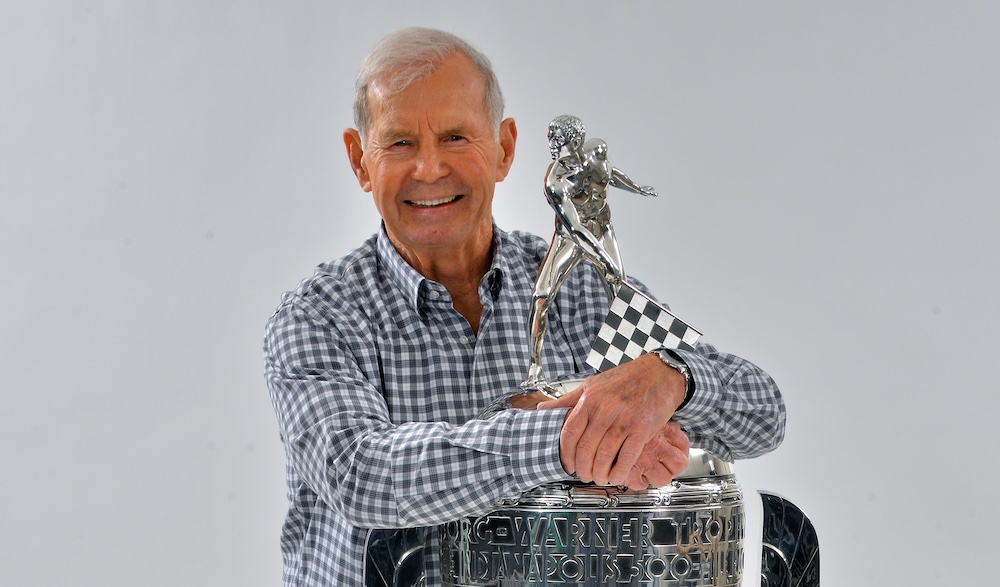Parnelli would soon accept that running a roadster against the rear-engined “funny cars” at any paved track was a short-term policy. He found success elsewhere, taking the 1963 stock car class of the Pikes Peak Hillclimb, a feat he would repeat the following year, but post-Indy, Jones failed to lead another Indy car lap in ’63. At Milwaukee, he had seen Clark score the first win for a rear-engined Indy car (as opposed to Bernd Rosemeyer’s Vanderbilt Cup victory at Long Island for a Grand Prix-spec Auto Union in 1937). And at the Brickyard the following year, Parnelli qualified “only” fourth for the 500, behind Clark, Marshman and Ward, all pedaling funny cars. When Clark’s Lotus retired with tire trouble that broke the rear suspension, Jones looked like he might win back-to-back Indy 500s. But Ol’ Calhoun caught fire as it left the pits and the blaze was serious enough that Jones had to bail while the car was still rolling.
Two races later, Jones tasted the future at Milwaukee, driving a Team Lotus entry to pole and leading 195 of the 200 laps, emulating Clark’s domination there a year earlier. Three races after that, Jones was at it again, holding everyone’s feet to the flames around Trenton. He liked the Lotus and excelled in it.

In fact, in 1964 he proved he had adapted to rear-engined cars, period, having won the prestigious Los Angeles Times-backed 200-mile sports car race around the twists of Riverside in a Cooper T61-Ford against the likes of Jack Brabham, Ken Miles and Bruce McLaren that same year. But he had kept his hand in with sedans, wheeling a Mercury to six wins and that year’s USAC Stock Car Championship. His road course flair and his wins for Lotus even led to an invitation from Colin Chapman to join Clark in F1. Jones, as canny as he was fast, knew the second Lotus ride was a poisoned chalice, knew Indy car offered more money than F1, and said he wasn’t interested.
At all, as it turns out. Parnelli was pretty much done with open-wheel racing at the age of 31, and his full-time Indy car career ended when the ’64 Indy car season did – or rather, a few laps before that. He had been crushing the opposition in the season finale in Phoenix when a puking fuel injector sent oil onto his rear tires, spinning him hard into the wall.
Jones was as tough as they come but this shunt prompted a career rethink and he acknowledged that team ownership was increasingly dominating his thoughts. In ’65 he entered just five Indy car races – second behind Clark at Indy, first again at Milwaukee. In ’66, it was Indy only – he qualified a Shrike in fourth but was out before half-distance due to wheel bearing failure.
But the Indy near miss that has lodged in everyone’s memory and that broke the hearts of both Jones and STP’s ebullient racing director Andy Granatelli came in ’67. Jones, coaxed out of retirement to drive the STP Paxton Turbine car, dominated the race – 171 laps led! – only for a six-dollar bearing to fail less than eight miles from the checkered flag. Winning NASCAR’s 500-mile race at Riverside was no consolation for this.
So he wasn’t going to put his neck on the line again as an Indy car driver: he had found the love of his life, Judy, they were keen to become parents, and the odds in this perilous era were always stacked against drivers who drove to the nth degree. But he couldn’t rid his system of the racing bug, and so Jones’ racing repertoire expanded laterally. No one who saw him wheel a Bud Moore-run Ford Mustang in the Trans Am series will forget the never-say-die attitude he exhibited, almost from corner to corner. There was no drivers’ championship awarded until a couple years later, but his five wins from 11 races in 1970 ensured Ford was well ahead of the opposition in the manufacturers’ standings, and made Parnelli unofficial title winner.
Perhaps the most unlikely fascination for Jones — notwithstanding his interest in driving hard whenever, wherever, and understanding the mechanicals of his cars — was in off-road racing. Never one to merely dabble, Parnelli threw himself wholeheartedly into the Ford Bronco project, and came out smiling: two Baja 1000 and two Baja 500 wins between 1970 and ’73 were the result.

By then, he was also proving to be a very successful team owner in his first love, IndyCar, having formed a team with his old business partner, Miletich. He hired Indy 500-winning race engineer George Bignotti to wrench, and the budding Al Unser to drive. This combo scored five wins in 1969, then dominated the ’70 season with Bignotti’s modified Lola — the Colt — used on all paved tracks. Unser scored 10 wins that year including Indy, and earned a runaway championship. The following year, Unser again had Indy among his five wins, while ever consistent teammate Joe Leonard captured the title for VPJ.
